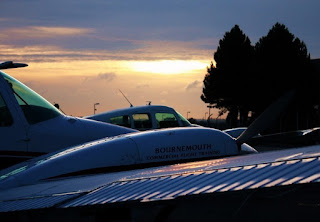
Happy New Year everyone !
I didn't get a chance to say it before as this is my first post since last year, actually all this went really fast! I'm just back from Gatwick where I took my first seven ATPL exams.
It's really hard to say whether I did well, I just hope so but overall I think I passed them all. Lets hope, at least.
We started with
Principles of Flight last tuesday, not an easy one since the questions asked are wider than what the book covers. It's a mix with commun sence, theoretical knowledge and what we learn during the lectures. The exam is only 1 hour long but time isn't an issue, at least not for that one. The afternoon we had
Mass & Balance followed by
Aircraft Performance. Mass & Balance is fairly straightforward. You learn the formula, and that's pretty much it. Performance requires a bit more thinking and some stuff looks rather similar to what we do in PoF.
Wenesday was probably the toughest day, starting with
Operational Procedures which really is learning by heart loads of figures, such as how many megaphones must your aircraft have with such number of seats and such layout, it also covers LVPs (Low Visibily Procedures), CAT I/II/III A B and C landings, circling approaches minima, ETOPS Operations (Extended Range Twin-Engine Operational Performance Standards), and flight hazards. Our instructor (ex Boeing 757 captain) made it all very interesting, but when it comes to passing an exam, it looks huge to learn all this by heart.
The afternoon we had
Flight Planning, and we basically spent three hours opening huge charts on our small desks, looking for waypoints, airfield and navigation facilities ...
Not that it was really tough but three hours was just enough and I finished like 1 minute before the end.
Meteorology on thursday and, finally,
Human Performance & Limitations (HP&L) on friday. It definitely was a busy week! I took the pictures from my room's window in the hotel we stayed at. At least, I had the view.
 As we got into a great chaos due to the Islandic ash cloud over Europe, our exams results kind of got delayed and I've heard some exams had to be remarked.
As we got into a great chaos due to the Islandic ash cloud over Europe, our exams results kind of got delayed and I've heard some exams had to be remarked.




































